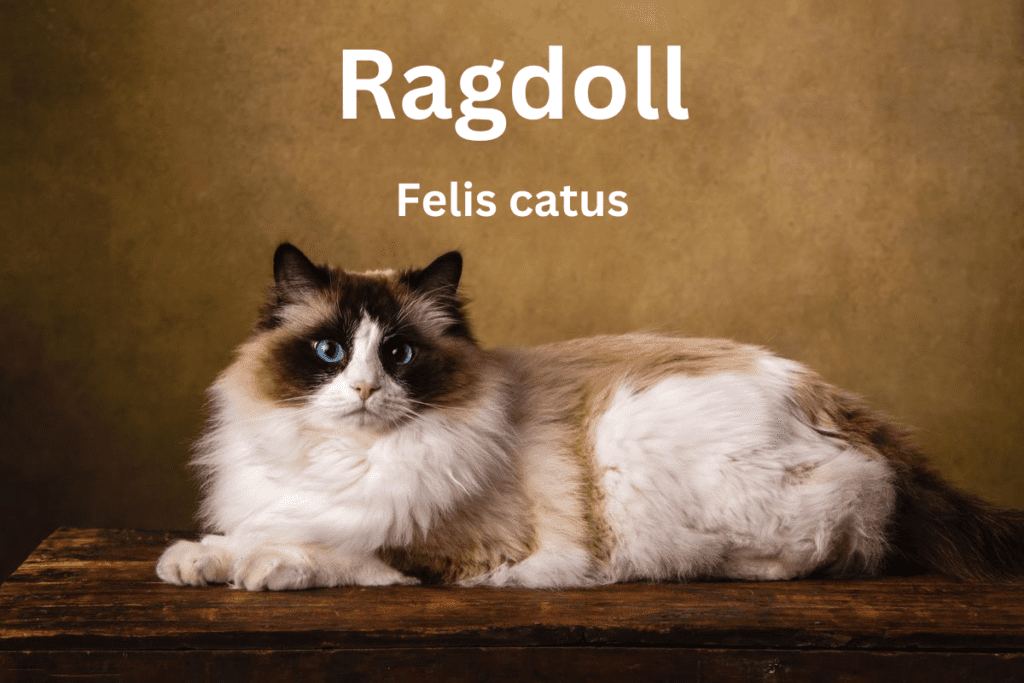
Are you looking for a feline companion known for being gentle, affectionate, and family-friendly?
Look no further than the Ragdoll Cats breed. With their plush coats, stunning blue eyes, and laid-back personalities, Ragdolls have become one of the world’s most popular breeds of domesticated cats.
This article will explore the top 10 things to love about Ragdoll cats, including their history, personality, physical characteristics, care requirements, and much more.
History of the Ragdoll Cats:
The Ragdoll cats breed has a fascinating history. In the 1960s, a Riverside, California resident named Ann Baker discovered the Ragdoll cat breed. Baker-bred cats with specific traits, including a docile temperament, large size, and unique colorpoint coat pattern. She named this new breed the “Ragdoll” because they tended to go sluggish and relax when picked up. Ragdoll cats have become popular and highly sought-after due to their outstanding characteristics.
Ragdoll Cats Personality:
One of the most appealing things about Ragdoll cats is their gentle and affectionate personality. They are often described as ”gentle giants” because of their large size and sweet temperament. Ragdoll cats are incredibly friendly and enjoy spending time with their owners, whether snuggling on the couch or playing games.
They are also brilliant cats and can be taught to perform tricks and walk on a leash. They are also patient, well-behaved, and good-natured. Ragdoll cats are human-oriented and are known for their loyalty to their owners.
Physical Characteristics:
Ragdoll cats are a giant cat breed, with males typically weighing between 12 and 20 pounds and females weighing between 8 and 15 pounds. They have soft and fluffy coats in various colors and patterns, including colorpoint, mitted, and bicolor. Their most distinctive feature is their blue eyes, contrasting with their pointed skin. Ragdoll cats have a long, muscular body structure, broad chests, and thick legs.
Ragdoll Cats Care:
Ragdoll cats are well-known for having loving, relaxed attitudes, making them excellent family pets. Proper care of your Ragdoll cat is essential for their overall health and well-being, which includes feeding and nutrition, grooming and hygiene, and exercise and playtime.
Feeding and Nutrition:
A well-balanced diet is essential for your Ragdoll cat’s health. High-quality commercial cat food that meets the nutritional requirements of cats is a good option. Wet food can be given occasionally, providing extra moisture and variety in their diet. Avoid feeding your cat human food or table scraps, leading to digestive issues and obesity.
Grooming and Hygiene:
Ragdoll cats have long, silky coats that require regular grooming to prevent matting and hairballs. Brush your cat’s coat at least once a week with a soft-bristled brush to remove loose hair and tangles. Bathing your cat every few months with a mild cat shampoo can help keep its coat clean and shiny. Also, regular nail cutting is required to prevent them from becoming excessively long and uncomfortable. Make sure to brush their teeth and ears as well frequently.
Exercise and Playtime:
Ragdoll cats are less active than other breeds. They still need regular exercise and fun to keep a healthy weight and avoid a lack of interest. Encourage your cat to play with toys such as scratching posts, balls, and interactive toys. It would be best if you allotted time each day to build your relationship with your cat.
Following these guidelines ensures that your beloved feline companion lives a happy and healthy life.
How do I take care of a Ragdoll cat?
Ragdoll cats require regular grooming, such as weekly brushing, to prevent matting and bathing as needed. They also need regular vet check-ups and vaccinations, a balanced diet, and plenty of exercise.
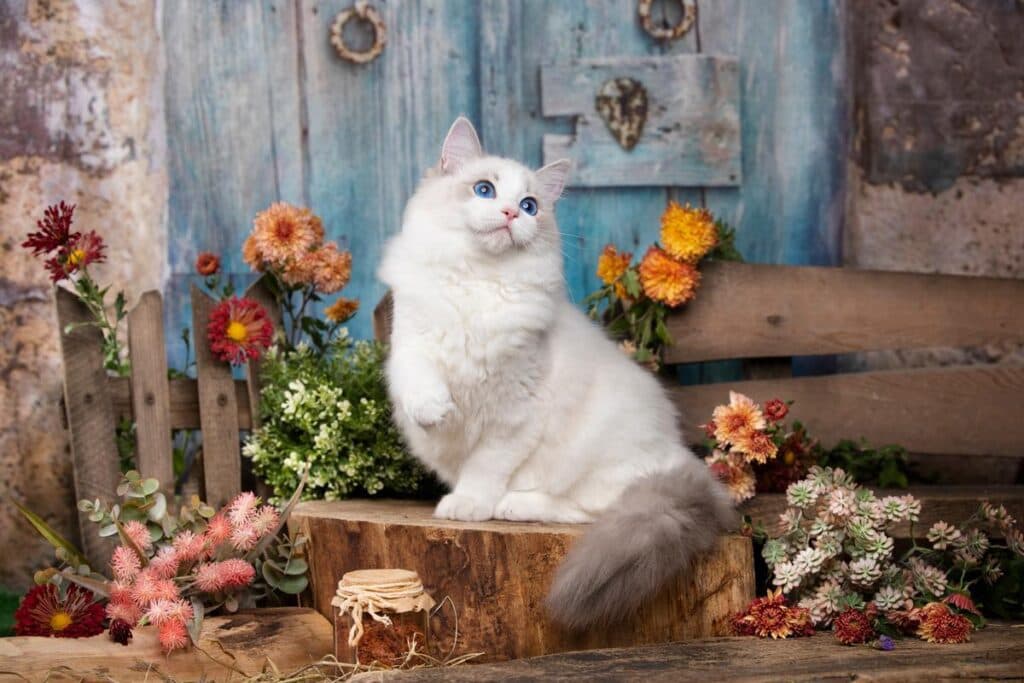
Ragdoll Cats Grooming:
Ragdoll cats have a soft and beautiful coat that requires regular grooming. This involves brushing their skin at least twice a week, cleaning their ears, trimming their nails, and brushing their teeth. Handy tools and gentle cat shampoo are essential to avoid stripping their coat of natural oils and causing skin irritation. Grooming also helps strengthen the bond with your pet.
Ragdoll Cat Behavior:
Ragdoll cats are known for their soft and friendly nature, making them great companions for families with children or other pets. They love human company and will often follow their owners around the house. They are not particularly vocal but will communicate with their owners through meows, purrs, and body language. However, they are still playful and enjoy interactive playtime with their owners. They are social, love attention, and are often described as “purr machines” because of their constant purring.
Ragdoll Cats food:
Feeding your Ragdoll cat a balanced diet is crucial for their health and well-being. Use high-quality commercial cat food that meets their nutritional needs, and monitor their portion sizes to avoid obesity. Since Ragdolls are prone to dehydration, consider incorporating wet food into their diet to help them stay hydrated. Based on your Ragdoll’s age, weight, and activity level, please consult your veterinarian to decide on a good quantity of food for them.
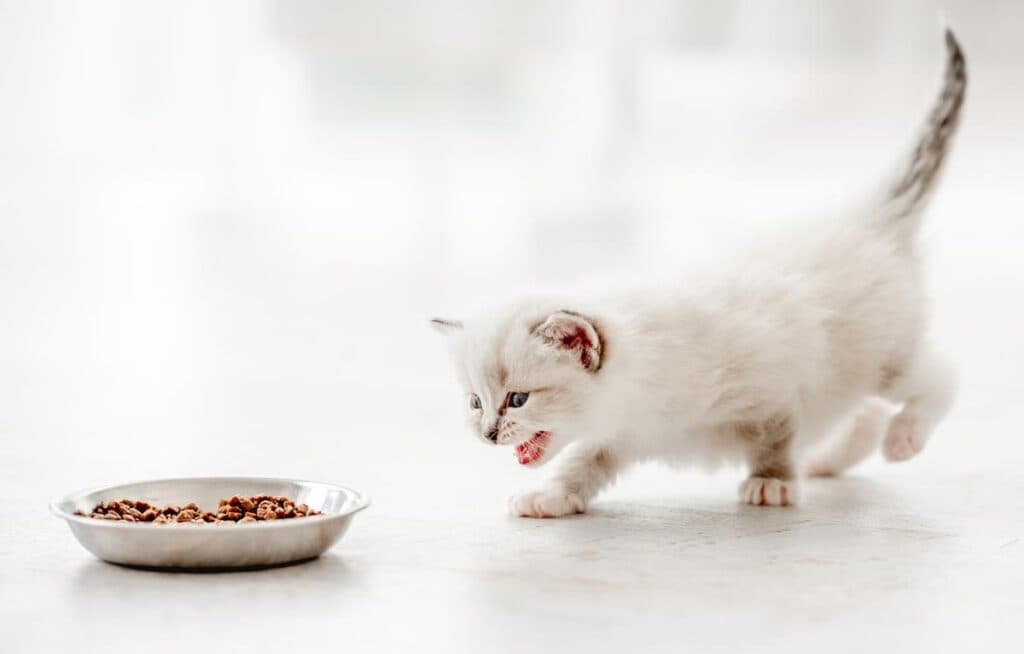
Ragdoll Cats Size:
Ragdoll cats are a giant cat breed, with males typically weighing between 12 and 20 pounds and females weighing between 8 and 15 pounds. This large size makes them appealing as pets, as they appear regal and majestic. However, it’s important to note that this size also requires plenty of space to move around and play, so they might not be appropriate for small apartments.
Ragdoll Kittens:
Ragdoll kittens are adorable and playful. They are born white and start developing their colors and patterns within the first few weeks. They are generally very active and curious but enjoy cuddling and being held. Ragdoll kittens are known for their docile and calm temperament, which makes them great companions for children.
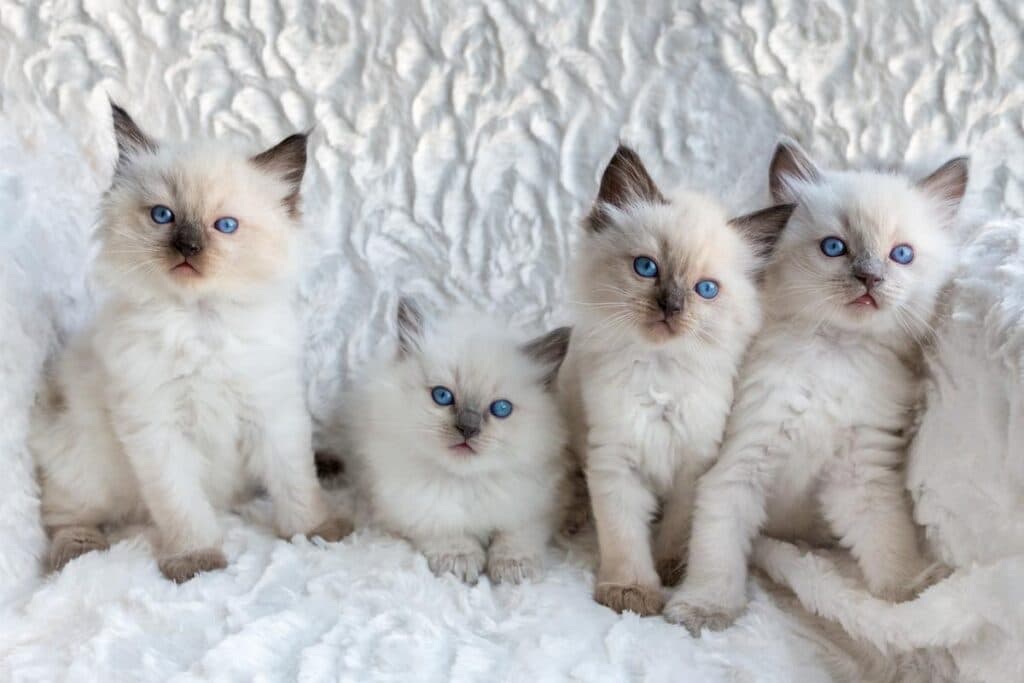
Training and Socialization:
Training and socialization are crucial for your pet’s overall development and well-being. This includes litter box training, basic obedience training, and socializing with family and other pets. Let’s discuss each of these attributes in more detail.
Litter Box Training:
Training your cat to use the litter box is the most crucial aspect of cat ownership. It’s vital to provide your cat with a clean, private, and easily accessible litter box. Clean the litter box daily to maintain good hygiene and prevent unpleasant odors. If your cat shows signs of avoiding the litter box, such as going to the bathroom outside of the box, consult with your veterinarian to rule out any medical issues.
Basic Obedience Training:
A key aspect of your pet’s training includes basic obedience training. It’s essential to train your pet to understand simple instructions such as “sit,” “stay,” and “come.” You can use treats and positive reinforcement to motivate your pet to learn. Consistency is necessary when training, so practice regularly and be patient with your pet. If you need help with training, consider enrolling your pet in a professional training program.
Socializing with Family and Other Pets:
Socializing your pet with family members and other pets is essential for their social development. It’s important to gradually introduce your pet to new people and pets, using positive reinforcement to encourage good behavior. If you have any other pets, introduce them slowly and supervise their interactions until they become comfortable with each other. Encourage your pet to interact with different people and pets to build their confidence and social skills.
Proper training and socialization are essential for your pet’s overall well-being. By providing adequate litter box training, basic instruction in obedience, and interaction with family members and other pets, you can help your pet develop into a happy and well-behaved companion.
Ragdoll Cat Price:
A Ragdoll cat’s cost can vary depending on several factors, including the breeder, region, and the cat’s ancestry. A Ragdoll cat can range from $400 to $2,000. You must purchase your cat from a reputable breeder who can provide you with documentation of their health and lineage.
Ragdoll Cat Health:
Ragdoll cats are generally healthy, but like all cats, they can be susceptible to specific health issues such as dental problems and kidney disease. Maintaining a balanced diet and providing your cat with regular exercise is essential to keep them healthy.
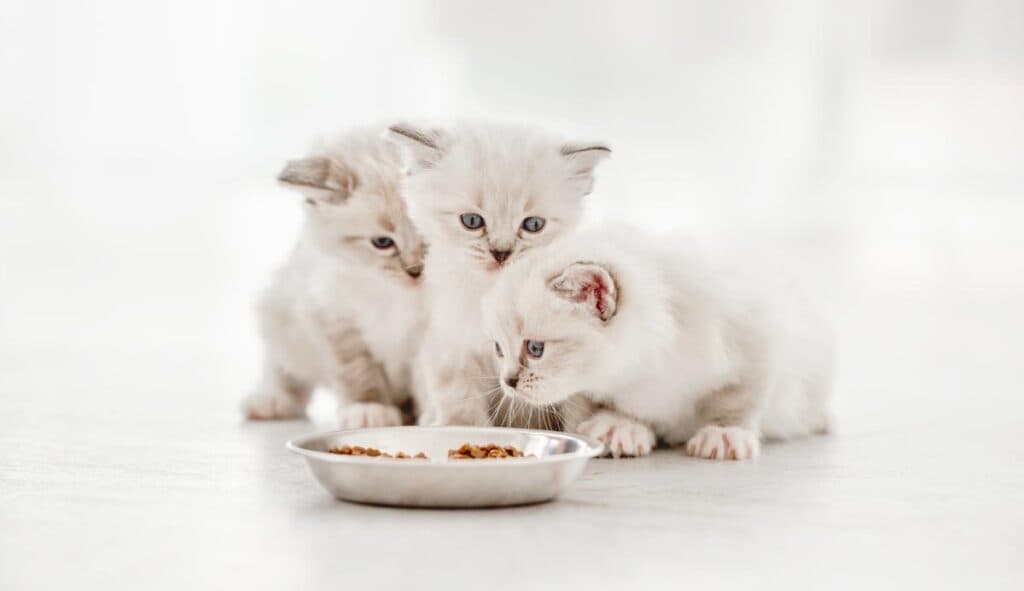
Ragdoll Cat Shedding:
Ragdoll cats have a long, silky coat that sheds moderately throughout the year. Regular grooming can help minimize shedding and prevent matting. Brushing your cat’s coat regularly and using a vacuum or lint roller to remove loose fur from your home is essential.
Ragdoll Cat Lifespan:
A Ragdoll cat has a lifetime of between 12 to 15 years. Some Ragdoll cats can live up to 20 years with proper care and attention. Regular visits to the veterinarian and regular exercise may ensure your cat’s long and healthy life.
Top 10 Reasons Why Ragdoll Cats Are So Beloved
Ragdoll cats are famous for many reasons, from their gentle personalities to stunning blue eyes. If you’re considering adopting a cat and are curious about Ragdolls, here are the top 10 reasons these cats are so beloved.
- Gentle and Affectionate Temperament: Ragdoll cats are known for their calm and loving nature, making them great family pets.
- Stunning Blue Eyes: Ragdolls have striking blue eyes that capture the hearts of many cat lovers.
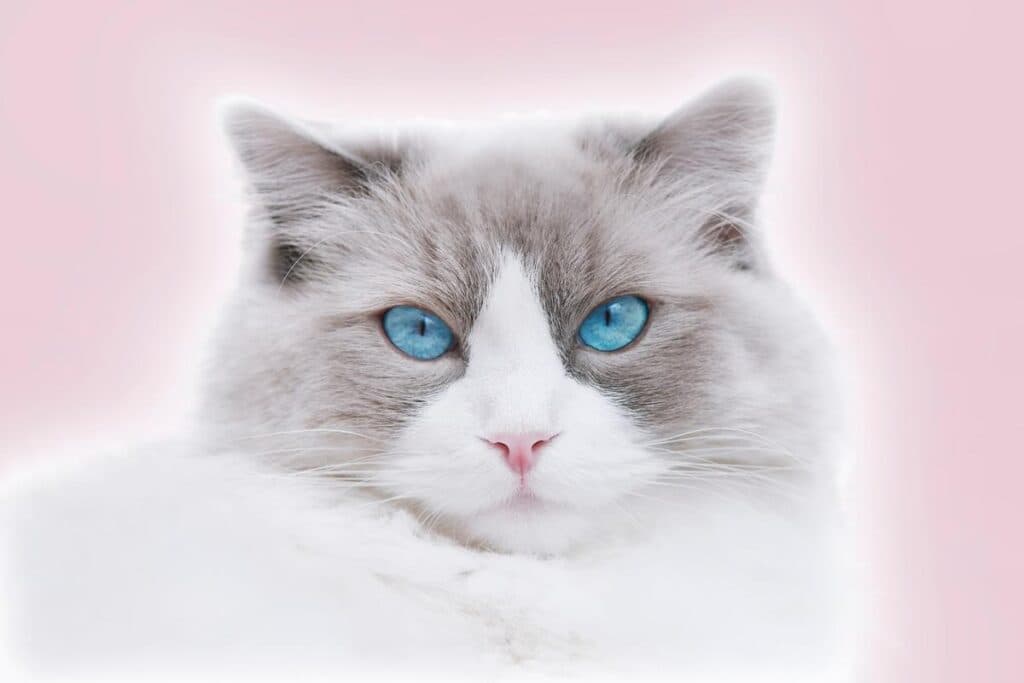
- Unique Pointed Coat: The Ragdoll’s pointed coat comes in various colors and patterns, making each cat unique and beautiful.
- Laid-Back Personality: These cats have a relaxed demeanor, making them simple to handle and maintain.
- Playful and Friendly: Ragdolls enjoy playtime and love to interact with their humans and other pets.
- Minimal Shedding: Ragdolls have relatively low shedding compared to other long-haired cats, making them an excellent choice for people with allergies.
- Docile and Tolerant: Ragdolls make lovely family pets since they are typically friendly and understanding of kids and other animals.
- Social and Loyal: Ragdolls are social cats and tend to bond closely with their humans, often following them around the house.
- Easy to Train: These cats are intelligent and can quickly learn basic commands and tricks.
- Long Lifespan: With proper care, Ragdolls can live for up to 15-20 years, giving their owners many happy years with their beloved pets.
Overall, Ragdoll cats have earned their place in the hearts of cat lovers worldwide thanks to their striking appearance, charming personalities, and long lifespans.
Conclusion:
Ragdoll cats are a wonderful cat breed that has captured cat lovers’ hearts worldwide. From their soft and cuddly coats to their gentle personalities, there’s a lot to love about these feline friends. So whether you own a joyful Ragdoll or are considering purchasing one, you can be sure you’ll get a devoted friend who will bring you years of happiness and company. So why start your search for your perfect Ragdoll cat today?
What is a Ragdoll cat?
Ragdoll cats are domestic cats known for their relaxed and friendly temperament. They have long, soft fur and distinctive blue eyes.
What are the top 10 things to love about Ragdoll cats?
- Affectionate nature
- Gentle and easy-going temperament
- Playful and social behavior
- Soft and cuddly fur
- Stunning blue eyes
- Low-maintenance grooming needs
- Intelligence and trainability
- Excellent with children and other pets
- Calm and relaxed demeanor
- The lifespan of up to 15-20 years.
Do Ragdoll cats shed a lot?
Ragdoll cats do shed, but they have low-maintenance grooming needs, and their fur is less likely to mat or tangle than other long-haired breeds.
How can I train my Ragdoll cat?
Ragdoll cats are intelligent and can be trained using positive reinforcement techniques like clicker training and treats. They are also eager to please and enjoy learning new things. Learn more about Ragdoll training and socialization by visiting the dedicated section on Training and Socialization.
Can Ragdoll cats be left alone?
Ragdoll cats are social animals and may become bored or anxious if left alone for long periods. Providing them with plenty of toys, playtime, and a companion is recommended.
Are Ragdoll cats hypoallergenic?
No, Ragdoll cats are not hypoallergenic, but they produce less of the Fel d 1 protein that is often responsible for triggering human allergies.
Do Ragdoll cats require a lot of exercises?
Ragdoll cats are generally less active than other breeds but still need regular exercise and playtime to maintain their health and prevent obesity.
Can Ragdoll cats be trained to walk on a leash?
Yes, Ragdoll cats can be trained to walk on a leash with patience and positive reinforcement training. It’s important to start slowly and use a harness designed for cats.
What is the lifespan of a Ragdoll cat?
Ragdoll cats can live up to 15-20 years with proper care and nutrition.